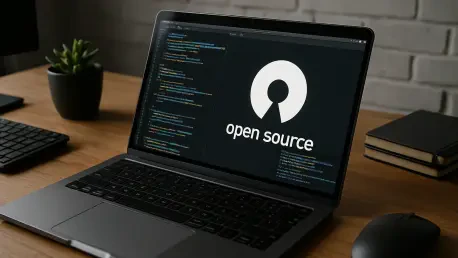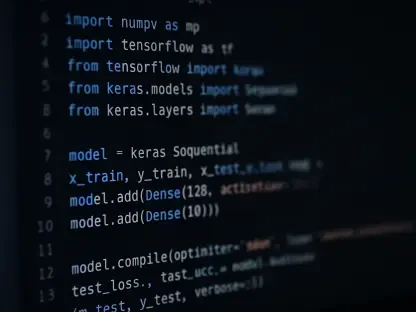In a landscape where digital infrastructure underpins national security, the recent decision by the Pentagon to halt Microsoft’s reliance on China-based engineers for cloud system support has exposed a glaring vulnerability in defense technology practices. This move, prompted by revelations of indirect foreign access to sensitive networks, underscores a critical issue: the Department of Defense (DOD) has, at times, overlooked significant risks in its technology dependencies. Open source software (OSS), while a cornerstone of global innovation and a driver of technological advancement, presents unique challenges when integrated into defense systems without rigorous oversight. The allure of OSS lies in its accessibility and collaborative nature, yet its unvetted use can jeopardize the very systems meant to protect national interests. As adversaries potentially exploit these gaps, the defense community must confront the urgent need to balance innovation with security, ensuring that the software powering critical operations is both robust and trustworthy.
1. Understanding the Risks of Open Source in Defense
The dependency on OSS within the defense sector, while fostering rapid development, has created a culture of reliance on software ecosystems that often include contributions from unverified foreign entities. This poses a substantial threat to national security, as the code embedded in mission-critical systems could be influenced by adversarial nations. The Pentagon’s recent actions regarding foreign engineers highlight a systemic issue where sensitive networks remain exposed due to insufficient vetting processes. Such oversights are not merely technical lapses but represent a fundamental risk to the integrity of defense operations. The challenge lies in recognizing that while OSS drives innovation, its integration into systems safeguarding warfighters demands a framework that prioritizes security over convenience. Without addressing these vulnerabilities, the defense community risks embedding potential threats directly into its digital infrastructure, a scenario that could have catastrophic consequences in high-stakes environments.
Moreover, the historical tendency to prioritize speed over scrutiny in adopting OSS has led to repeated instances where vulnerabilities are discovered only after significant exposure. The DOD’s past failures to act on early warnings about foreign access to critical systems serve as a stark reminder of the stakes involved. When software powering essential defense technologies originates from global communities with unclear allegiances, the potential for compromise grows exponentially. This is not an abstract concern but a tangible threat, as adversaries could exploit these gaps to gain strategic advantages. The defense sector must shift its approach, acknowledging that every line of code carries implications for national security. Establishing clear protocols to identify and mitigate risks associated with OSS is no longer optional but imperative to ensure that innovation does not come at the expense of safety or sovereignty.
2. Why Guardrails Are Essential for OSS Deployment
Embracing OSS in defense is not inherently problematic; in fact, it remains a vital component of modern software development, fueling progress across industries. However, its application in sensitive areas like defense AI systems requires stringent oversight to prevent it from becoming a liability. Without proper governance, vetting, or understanding of contributor origins, OSS can transform from an asset into a significant vulnerability. Tools like vLLM, designed to optimize large language models, and OpenWebUI, which simplifies AI usage, exemplify the dual nature of OSS. While these platforms accelerate deployment and experimentation, their lack of cybersecurity best practices and maintenance by global communities—including contributors from adversarial nations—raises serious concerns. The defense sector must implement guardrails to ensure that the benefits of OSS are not overshadowed by preventable risks.
Furthermore, the authorization of insecure OSS dependencies, such as NIPRGPT, within the DOD despite known critical vulnerabilities illustrates a dangerous gap in current practices. This highlights a broader issue of accountability and security in OSS adoption. The absence of rigorous evaluation processes allows potentially compromised code to infiltrate systems that are integral to national defense. To counter this, a systematic approach to assessing the provenance and integrity of OSS components is essential. Establishing clear standards for contributor verification and code security can mitigate the risk of exploitation by foreign entities. By prioritizing these measures, the defense community can harness the power of OSS while safeguarding against threats that could undermine mission-critical operations. The focus must be on transforming OSS from a potential weak point into a fortified element of defense technology strategy.
3. The High Cost of Neglecting OSS Security
Defense programs increasingly rely on OSS to advance AI initiatives, often prioritizing rapid implementation over thorough security assessments. This rush to deploy overlooks fundamental questions about code origin, maintenance, and cybersecurity status. Such negligence embeds unvetted software into systems central to the DOD’s AI strategy, creating a dependency on developers whose identities and intentions remain unknown. This mirrors the recklessness of installing unverified foreign components in military hardware like fighter jets—a practice that would never be tolerated in physical systems. The failure to apply similar scrutiny to digital assets risks embedding vulnerabilities that could be exploited at critical moments. Addressing this requires a cultural shift within defense circles to treat software integrity with the same urgency as physical equipment security.
Additionally, the strategic importance of AI in modern warfare amplifies the consequences of mismanaging OSS. Adversaries recognize AI as a defining capability and actively contribute to open-source ecosystems to influence the technologies the DOD adopts. By embedding fragile, foreign-influenced code into critical systems, the defense sector inadvertently cedes strategic advantages to potential opponents. This is not innovation but a perilous oversight that could compromise national security before conflicts even emerge. The urgency to act cannot be overstated, as every instance of unvetted OSS integration deepens the risk of exploitation. A robust framework for assessing and securing OSS must be prioritized to prevent adversaries from turning a tool of progress into a weapon against defense infrastructure. Only through deliberate and proactive measures can the sector ensure that technological advancements bolster rather than undermine security.
4. Leveraging Commercial Off-The-Shelf Solutions for Safe OSS Use
Prohibiting OSS in defense is neither practical nor desirable, as it would stifle innovation at a time when technological agility is paramount. Instead, a responsible approach lies in integrating OSS through commercial off-the-shelf (COTS) solutions, which combine the benefits of open source with enterprise-grade security. COTS offerings provide a structured environment where software is rigorously tested and hardened by vendors who have a vested interest in maintaining quality and reliability. Unlike standalone OSS, which often lacks clear accountability, COTS ensures that vulnerabilities are addressed promptly by identifiable entities. This model offers a balanced pathway for the defense sector to leverage OSS while mitigating the risks associated with unvetted code, aligning innovation with the stringent demands of national security.
Beyond security, COTS solutions bring resilience through formal contracts, service-level agreements, and dedicated support teams. This contrasts sharply with the often volunteer-driven nature of OSS maintenance, where critical systems could be left vulnerable due to a lack of resources or accountability. By adopting COTS, the DOD can ensure that mission-critical systems are not dependent on disparate global contributors but are instead backed by structured support frameworks. This approach does not reject OSS but enhances it, embedding the oversight and reliability necessary for defense applications. Implementing COTS as a primary vehicle for OSS integration allows the defense community to maintain technological momentum while safeguarding against potential threats. It represents a pragmatic solution to a complex challenge, ensuring that innovation and security are not mutually exclusive.
5. Critical Steps for the DOD to Secure OSS Integration
The DOD must move beyond deliberation and take decisive action to address the risks associated with OSS in defense systems. Immediate steps include a comprehensive audit of open-source dependencies to map where OSS is embedded and identify associated risks. Establishing strict vetting standards is equally crucial, requiring every OSS component to be evaluated for contributor identity, code security status, and potential foreign influence that could compromise national security. Prioritizing COTS solutions for mission-critical systems offers a way to harness OSS while ensuring accountability, rigorous testing, and robust security measures. Finally, balancing speed with sovereignty means securing OSS before it touches systems safeguarding national defense—anything less constitutes negligence. These actions form a clear roadmap for mitigating vulnerabilities in an increasingly digital battlefield.
Equally important is the recognition that the stakes of inaction are not hypothetical but tied to the future of warfare, where AI plays a defining role. Implementing these measures requires a commitment to transparency and diligence, ensuring that every layer of software in defense systems is scrutinized for potential weaknesses. The audit of dependencies must be thorough, leaving no system unchecked, while vetting standards should be non-negotiable, rooted in a zero-tolerance policy for unverified code. Opting for COTS where possible provides a safety net that pure OSS cannot, bridging the gap between innovation and reliability. Securing OSS before deployment is the final, critical step to prevent catastrophic oversights. By adhering to these principles, the DOD can transform its approach to OSS, turning a potential liability into a fortified asset that supports national security without compromising on technological progress.
6. Reflecting on Past Oversights and Future Protections
Looking back, the defense sector’s historical lapses in managing OSS risks reveal a troubling pattern of prioritizing expediency over caution, as evidenced by past authorizations of insecure software despite known vulnerabilities. These missteps allowed potential threats to infiltrate critical systems, a vulnerability that adversaries could have exploited to undermine national security. The failure to act on early warnings about foreign access to sensitive networks compounded the danger, leaving digital infrastructure exposed at critical junctures. Reflecting on these oversights, it becomes evident that the absence of robust vetting and governance frameworks has placed the DOD in a precarious position, risking strategic disadvantages in an era defined by technological warfare.
Moving forward, actionable solutions must guide the path to safer OSS integration. The DOD should institutionalize regular audits and stringent evaluation criteria to prevent future vulnerabilities from taking root. Emphasizing COTS solutions for high-stakes systems can provide the necessary security and support to mitigate risks. Additionally, fostering a culture of accountability within defense technology practices ensures that every decision prioritizes sovereignty alongside innovation. By learning from past negligence and embedding these protective measures, the defense community can build a resilient digital foundation. This proactive stance not only addresses immediate threats but also prepares for the evolving challenges of AI-driven warfare, safeguarding national interests for the long term.









